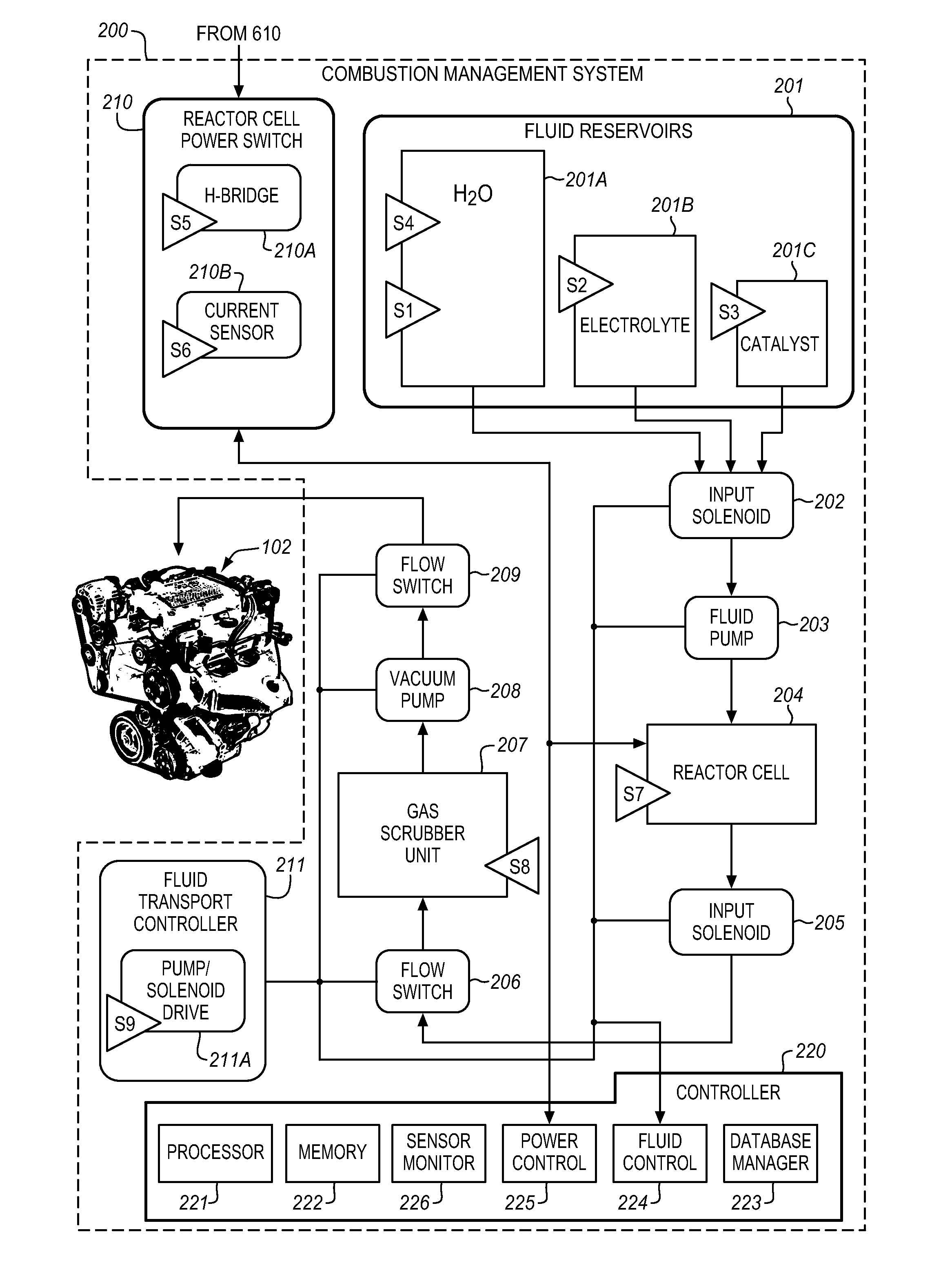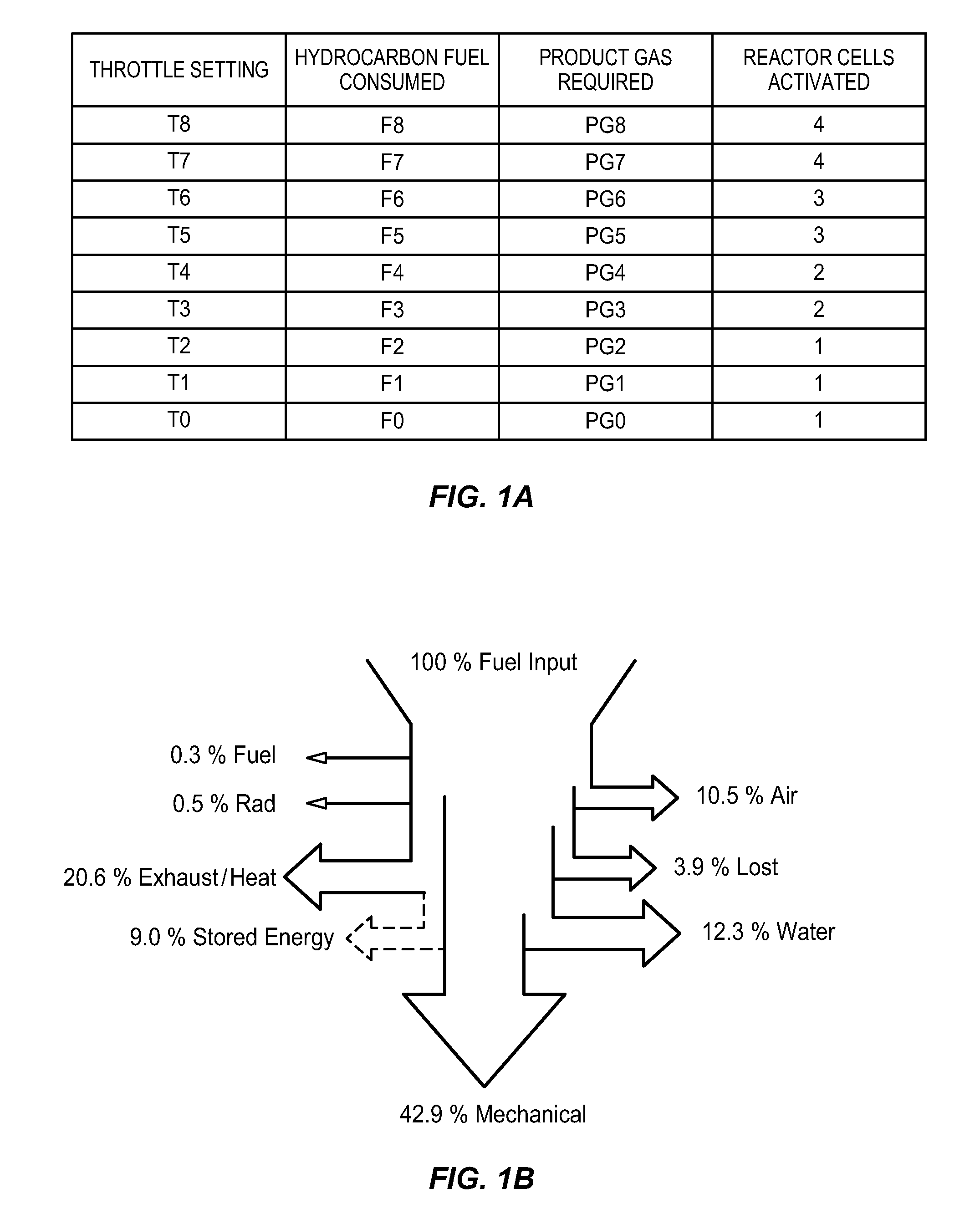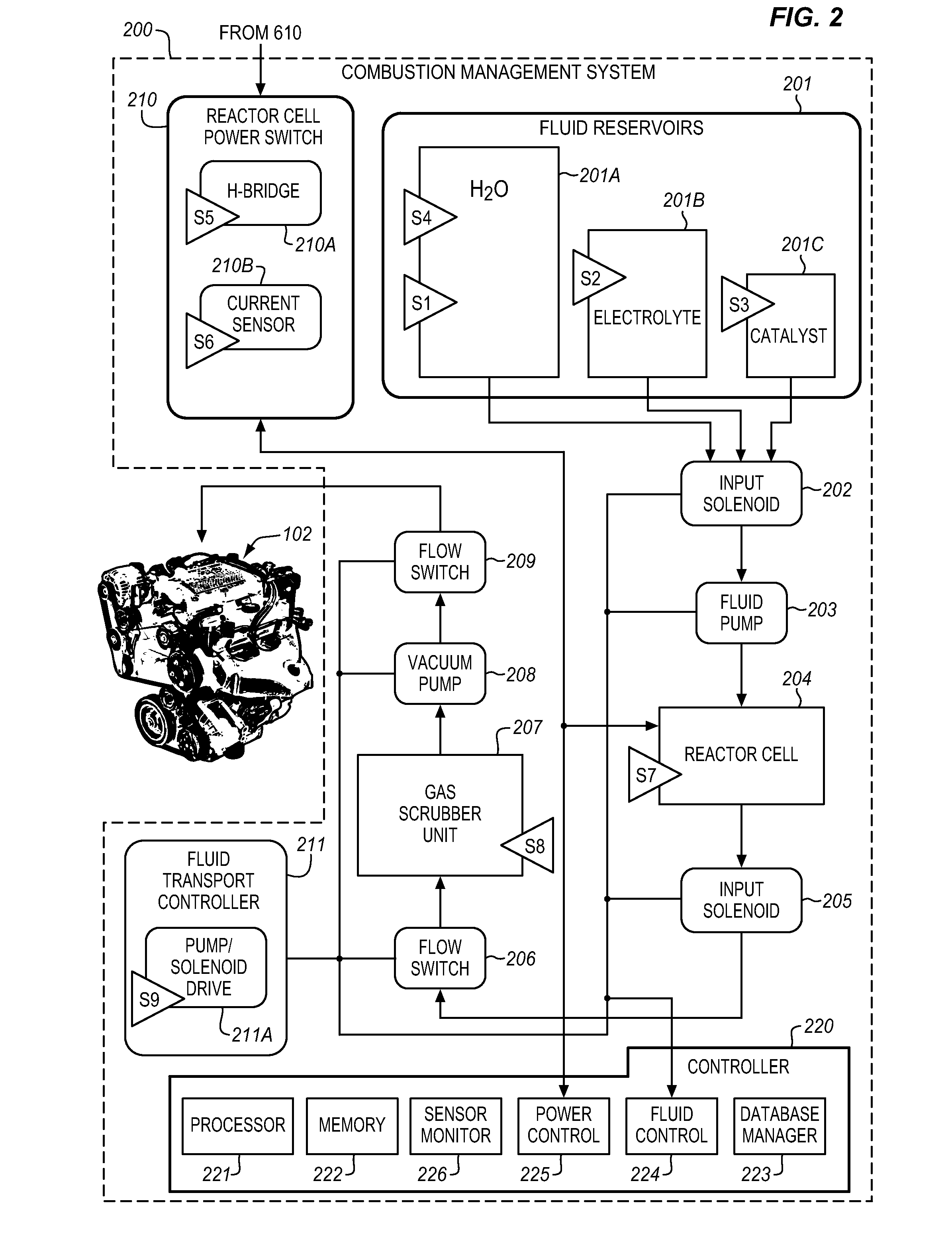System to dynamically vary the volume of product gas introduced into a hydrocarbon combustion process
a technology of hydrocarbon combustion and product gas, which is applied in the direction of fuel system, non-fuel substance addition to fuel, electrical control, etc., to achieve the effects of increasing the reactive tendency toward completion, increasing the potential for oxidative continuance, and increasing the diffusivity
- Summary
- Abstract
- Description
- Claims
- Application Information
AI Technical Summary
Benefits of technology
Problems solved by technology
Method used
Image
Examples
Embodiment Construction
Internal Combustion Engines
[0039]A diesel engine is an internal combustion engine that uses the heat generated by the compression of the atmospheric air in the combustion chamber to initiate ignition which burns the diesel fuel, which is injected into the combustion chamber during the final stage of compression. This is in contrast to a gasoline engine, which uses the Otto Cycle, in which an air-fuel mixture, located in the combustion chamber and compressed by a piston, is ignited by a spark plug. The gasoline engine has a thermal efficiency (the conversion of fuel into work) of 8% or 9%, while the diesel engine has a thermal efficiency of about 30%.
[0040]In the diesel engine, only air is initially introduced into the combustion chamber. The air then is compressed with a compression ratio typically between 15:1 and 22:1, resulting into a 40-bar (4.0 MPa; 580 psi) pressure compared to 8 to 14 bars (0.80 to 1.4 MPa) (about 200 psi) in the gasoline engine. This high compression of the ...
PUM
 Login to View More
Login to View More Abstract
Description
Claims
Application Information
 Login to View More
Login to View More - R&D
- Intellectual Property
- Life Sciences
- Materials
- Tech Scout
- Unparalleled Data Quality
- Higher Quality Content
- 60% Fewer Hallucinations
Browse by: Latest US Patents, China's latest patents, Technical Efficacy Thesaurus, Application Domain, Technology Topic, Popular Technical Reports.
© 2025 PatSnap. All rights reserved.Legal|Privacy policy|Modern Slavery Act Transparency Statement|Sitemap|About US| Contact US: help@patsnap.com



